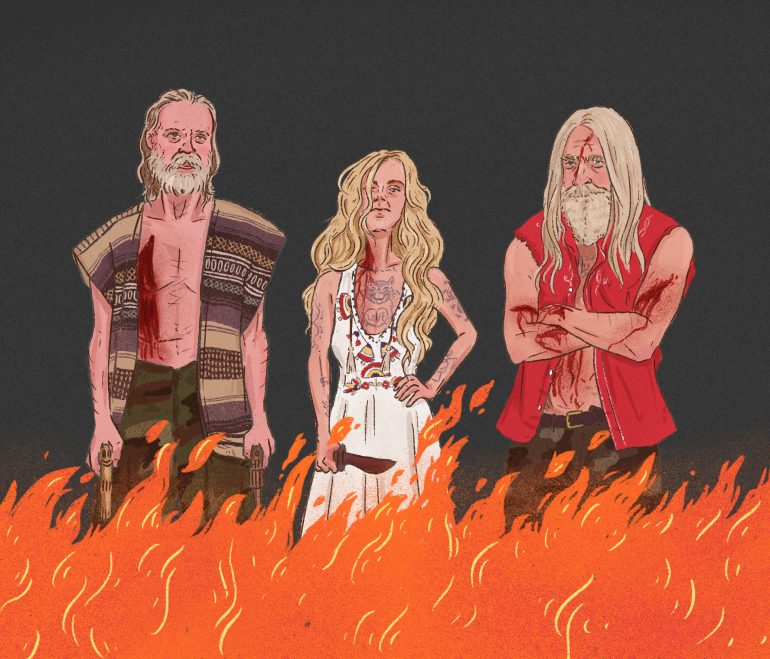There are many things that irritate me about the world of films and television, but arguably nothing is more annoying than when a series long finished, and wrapped up with a neat bow, announces a sequel. From Star Wars prequels to Toy Story 4, there’s no shortage of examples in which a series that has told an entire arc is suddenly rebooted, often in the hopes of a last-ditch cash-grab effort. Thus, when I heard that there was going to be a sequel for one of my favorite horror sagas, consisting of the films House of 1000 Corpses (2003) and The Devil’s Rejects (2005), directed by musician-turned-filmmaker Rob Zombie, I had absolutely no hope that the film was going to be anything of remarkable substance. But because I held a fondness in my heart for the Firefly family portrayed in the films, I gave it a shot. And boy, have I never been so happy to have been proven wrong before.
Released for only two days in cinemas before being distributed digitally everywhere, 3 From Hell released mid-October and flew mostly under the radar, with the exception of indie-horror fans everywhere clamoring to see it as soon as possible. Continuing almost exactly from where The Devil’s Rejects left off, viewers are thrust back into the world of the Firefly family as they face the consequences of their serial killer rampage displayed in the first two films of the series. Going into the film I knew nothing of the plot, and I was pleasantly surprised to see it unfold into an analysis of revenge and consequences. It was a decidedly more mature take than the prior films, which are, for the most part, slasher flicks designed to strike fear and disgust in people. While 3 From Hell still held on to its slasher movie roots, there was less grotesque hysteria and more subtle fiendish humor than the first two films.
Crafted nearly 15 years after its predecessor, it’s clear that Zombie has grown not only as a storyteller but also his knowledge of film technology. Gone are the gritty, poorly lit shots of gore, replaced instead with moments of crisp slow-motion violence—attributed not only to technological advances made in the past decade, but also from the understanding Zombie gained working on numerous films in the years between The Devil’s Rejects and 3 From Hell. The new way in which Zombie presents fight scenes is reminiscent of the Kingsman films, which are some of the most notable modern examples of incredibly stylistic violence. However, I dare to say that 3 From Hell does it better; the cheesy over-the-top elements that I always felt kept the Kingsman fight scenes from being something I could watch without being taken out of the moment, are not apparent in 3 From Hell, leaving viewers with scenes of calculated intensity—such as when lurks in the shadows and uses a bow and arrow to silently take down her attackers.
Although I don’t believe 3 From Hell was a necessary addition to the story, I’m glad Zombie decided to continue the journey of the psychotic family from Texas. It was bittersweet seeing the fictional family again on screen; upon seeing my favorite, Captain Spaulding, I shed a few tears, as the actor who plays him, Sid Haig, recently passed. I always feel weird when I explain to people that most of my comfort films are horror movies, but they are, and 3 From Hell confirmed that for me. I often fall asleep to Child’s Play or Scream and although I can’t quite explain why, they make me feel safe, as much as my favorite childhood films do. 3 From Hell is now just another horror film to add to the list of those that make me feel weirdly nostalgic and happy, with characters like Captain Spaulding providing moments of dark humor and hope that I sorely need. While the series could have ended with The Devil’s Rejects, I adore the Firefly family and am impressed with the way in which Rob Zombie crafted 3 From Hell to make it something entirely its own.
Illustration by Elizabeth Hung





